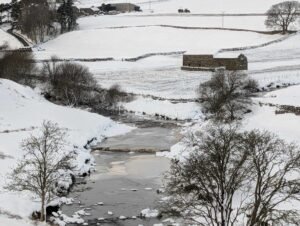Glacial archaeology is a fascinating field that examines the impact of glaciation on the landscape, and how ancient human activity interacted with the forces of ice and meltwater. The processes of glacial erosion and deposition have left behind a variety of landforms, such as moraines and glacial terraces, which not only shape the topography of the region but may also provide clues to human occupation and activity in prehistoric times.
Tag: Archaeology
Jan 22
Guide – Landscape Archaeology: The Geological Environment of Britain
The Geological Environment of Britain: The Foundation of Our Landscape The landscape of Britain has been shaped by millions of years of geological processes. From the formation of ancient mountain ranges to the shaping of valleys and river systems, the land we see today is the product of a dynamic and ever-changing history. Understanding the …
Jan 22
Guide – What is Landscape Archaeology?
Landscape archaeology is the study of past human interaction with the natural environment. It focuses on understanding how ancient societies perceived, organized, and shaped the land they inhabited, revealing the relationships between people, their settlements, and the broader landscape in which they lived.
Jan 21
Guide – Empathic Archaeology: Building a Strong Straw Man
Empathic Archaeology: Building a Strong Straw Man Question Everything and Question Again When engaging in Empathic Archaeology, the process of creating and refining a straw man—a provisional model of the past—requires a delicate balance of imagination and rigor. The archaeologist’s imagination fills the skeleton of the straw man with ideas and concepts, but these must …












